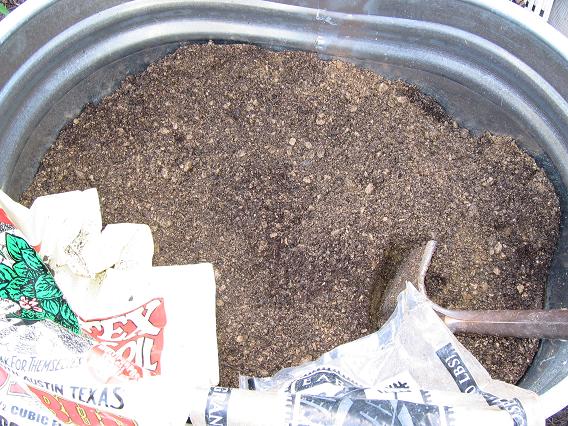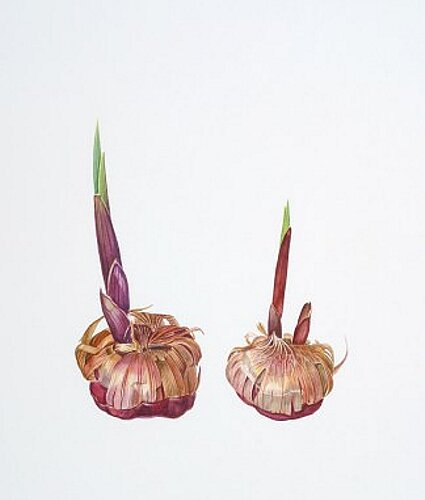
These are the fundamental tools necessary for gardening. They do not contribute to air or noise pollution, cost virtually nothing to operate, and require little cleaning and maintenance. Yet with a little people-power, these tools perform any task in the garden.
Cultivating tools primarily move around soil. They have a metal head and wooden, metal, or plastic handle. Look for carbon steel or stainless steel heads. If kept clean and dry between uses, carbon steel should not rust. Stainless steel is more expensive, but is rust-proof and makes work easier as soil falls away from it. Coatings on blades can wear off over time, making them a questionable expenditure. Wooden handles, such as hickory, are generally strong, and unlike metal or plastic, can be replaced if broken. Buy a handle that is of a comfortable length for you to use.
Forks loosen soil, cultivate, move bulky materials, such as weed piles and manure, and they lift root crops. In short, forks are versatile. Most forks have four, sturdy, metal prongs attached to a wooden or metal shaft. The best quality forks are those with the prongs and neck forged from a single piece of metal. Avoid forks pieced together or welded. Short-handled hand forks lift up plants and work well for knee-level weeding.
Hoes cultivate, weed, and form seed rows. They may have long or short handles with a blade attached. There are several types of hoes with specific uses. A Dutch hoe or scuffle hoe works well to remove small, surface weeds around plants. A combination hoe has prongs on one side for breaking up soil and a blade on the other for chopping or moving around soil. A triangular hoe creates V-shaped furrows. Hand hoes have short handles and small, narrow blades for cultivating between closely spaced plants.
Rakes create an even and level soil surface as well as rake debris. A forged metal, toothed head, attached to a wooden or metal handle, pulls material. Those with the most teeth work the fastest, because they cover more ground each time you rake. Flathead rakes last longer than bow-head types. Lawn rakes compared to cultivating rakes, are lightweight, and have flexible tines designed to move light debris such as leaves or mown grass.
Spades and shovels dig and turn soil. Splurge on a stainless steel one if you can, as it takes a lot of strain out of digging. A rounded spade turns over soil, while a pointed shovel digs into the ground as well.
Trowels are mini-shovels, great for digging small transplanting holes. They are especially handy for working in containers.
Other cultivating tools include pronged and tooth-wheeled models. The prongs or teeth break up the soil, but work well only after the soil has already been cultivated, and only to a shallow depth.
Pruning tools cut woody growth. Pruning is necessary to keep many plants in their prime . Short- or long-handled pruners, saws, and knives are examples of hand-held pruning tools.
Pruners work like scissors to snip branches. Buy pruners that give a clean, crisp cut. Ragged edges can leave plants open to infection. Get the best-quality stainless- or carbon-steel blade you can afford. Bypass pruners are the most versatile. Anvil pruners, unless kept very sharp, crush stems. Coated grips are worth the expense; they are more comfortable to use than bare steel.
Loppers are long-handled pruners used to cut branches in hard-to-reach places. The leverage created by the long handles makes cutting small branches a snap, and the shears can handle limbs 2 inches thick or more.
Tree pruners cut high branches. They work on a lever system, and some models can extend your reach up to 15 feet high. For most jobs though, a ladder and loppers will suffice.
Saws prune heavy branches. Of the several types available, a Grecian saw is one of the most versatile. It has a curved handle and teeth designed to cut only as you pull towards youself, making it easier to use in tight spaces. Bow saws work quickly, but are unwieldy to use in close quarters.
Knives have many uses in the garden. Use them for pruning, taking cuttings, grafting, and harvesting. A good pocket knife with a sharp, carbon-steel blade is a fine investment.
Shears can trim hedges, snip grass, cut back perennials, or create topiary masterpieces. Look for those with straight, sharp blades on sturdy wooden handles.
Lawn-care tools control where and how your grass grows.
Edgers make a clean cut at the border where grass meets another ground cover, such as pavement or planting beds. A sharp, half-moon-shaped head slices away sod. A sharp spade or garden knife does the same job.
Hand-held weeders such as ball weeders or a notched asparagus knife are useful for popping weeds out of the lawn without tearing up the turf.
Push-reel mowers may be a relic whose time has returned. Rotating blades cut grass evenly and provide a workout at the same time. Compared to motorized models, they are cheap to purchase, and they don't have any operating costs, except for occasionally sharpening the blades. Push-reel mowers also don't emit pollutants from burning fuel.
Spreaders apply fertilizer to lawns. There is a shoulder-carried version in which you turn a crank to spin granules out onto the lawn. But the more useful option is a hopper on wheels that you push. Most let you adjust the rate of application to your needs.
 I had always wanted the biggest rototiller I could get. I still don't have it, and now you couldn't give me one. I did, however, buy myself a chipper/shredder for Mother's Day one year. What makes gardener's spring for these big-ticket items? What are the alternatives to buying?
I had always wanted the biggest rototiller I could get. I still don't have it, and now you couldn't give me one. I did, however, buy myself a chipper/shredder for Mother's Day one year. What makes gardener's spring for these big-ticket items? What are the alternatives to buying? 
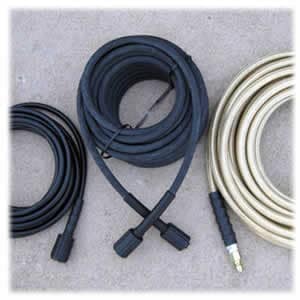
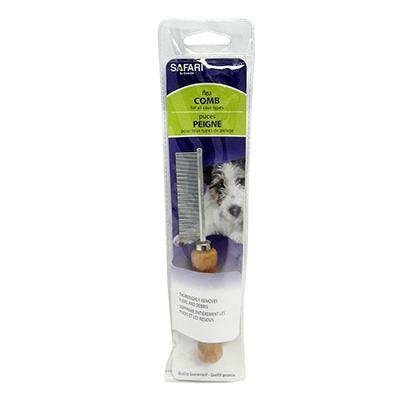 You can extend the life of any wooden handle the day you buy it. Use fine sandpaper to remove the finish. With your bare hands or a soft rag, generously rub the handle with boiled linseed oil. The warmth from your hands will help work in the oil, or leave a rag-oiled handle in the sun to warm the oil into the wood. Tung oil or vegetable oils such as olive or safflower oils also make good preservatives. The result is a smooth, water-resistant finish. Replenish with another rub whenever the wood begins to lose its satin feel.
You can extend the life of any wooden handle the day you buy it. Use fine sandpaper to remove the finish. With your bare hands or a soft rag, generously rub the handle with boiled linseed oil. The warmth from your hands will help work in the oil, or leave a rag-oiled handle in the sun to warm the oil into the wood. Tung oil or vegetable oils such as olive or safflower oils also make good preservatives. The result is a smooth, water-resistant finish. Replenish with another rub whenever the wood begins to lose its satin feel. 
 From starting seeds to maintaining full-grown plants, there is equipment for every step of the way. Almost anything you can buy for those jobs has a free or cheap substitute.
From starting seeds to maintaining full-grown plants, there is equipment for every step of the way. Almost anything you can buy for those jobs has a free or cheap substitute. 
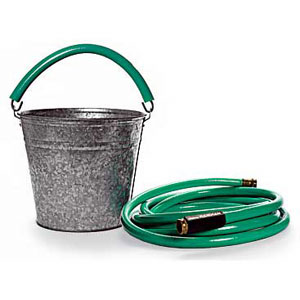 Watering equipment can be costly, but it may save you in the long run by lowering your water bills or pumping costs. Water containers are for carrying and dispensing water. Stores sell all kinds of expensive watering cans, but you can make cheap imitations. Plastic milk or water jugs are ideal. Punch holes in the bottom, put on the cap, and carry upside-down. Turn them over, and remove the cap to sprinkle water.
Watering equipment can be costly, but it may save you in the long run by lowering your water bills or pumping costs. Water containers are for carrying and dispensing water. Stores sell all kinds of expensive watering cans, but you can make cheap imitations. Plastic milk or water jugs are ideal. Punch holes in the bottom, put on the cap, and carry upside-down. Turn them over, and remove the cap to sprinkle water. 
 These are the fundamental tools necessary for gardening. They do not contribute to air or noise pollution, cost virtually nothing to operate, and require little cleaning and maintenance. Yet with a little people-power, these tools perform any task in the garden.
These are the fundamental tools necessary for gardening. They do not contribute to air or noise pollution, cost virtually nothing to operate, and require little cleaning and maintenance. Yet with a little people-power, these tools perform any task in the garden.  Most of us have more water than we know what to do with. Even in and regions there are occasional deluges of rain. Rainbarrels are not a new idea, but still a useful one. Position clean, empty barrels beneath downspouts or up on blocks around the garden. Barrels, positioned a few inches above the ground, can incorporate spigots and drip tubing for a cheap, gravity-flow irrigation system. A barrel positioned high above the ground creates strong water pressure, and far-flowing water. This time-honored method is excellent for flower or vegetable gardens.
Most of us have more water than we know what to do with. Even in and regions there are occasional deluges of rain. Rainbarrels are not a new idea, but still a useful one. Position clean, empty barrels beneath downspouts or up on blocks around the garden. Barrels, positioned a few inches above the ground, can incorporate spigots and drip tubing for a cheap, gravity-flow irrigation system. A barrel positioned high above the ground creates strong water pressure, and far-flowing water. This time-honored method is excellent for flower or vegetable gardens.  In a perfect world every drop of water you put on your plants would run straight to the roots and would be used immediately by the plant. But we have to deal with water loss. Knowing how to reduce it saves water and money.
In a perfect world every drop of water you put on your plants would run straight to the roots and would be used immediately by the plant. But we have to deal with water loss. Knowing how to reduce it saves water and money. 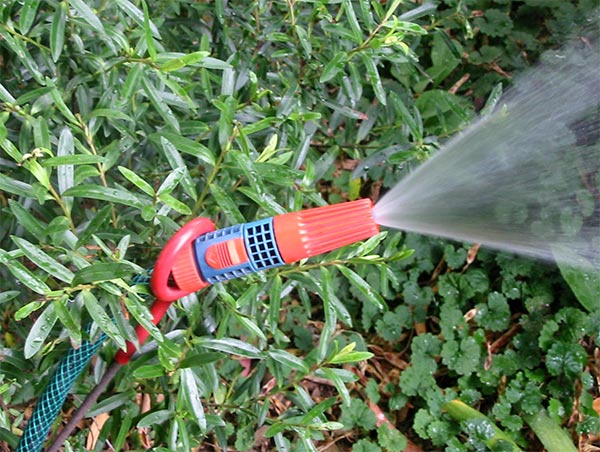 While there is no one answer to the question of how much water is just right for all gardens, there are some useful general guidelines. The most efficient and cost-effective way to water any plant is to fill the entire root zone with water, and let the soil become almost dry be fore the next watering. The amount of dryness depends on the plant. Let the top 2 or 3 inches dry out for most established plants. Let the soil around a large tree dry down several inches, but keep new or tiny plants moist to the top inch or so of soil.
While there is no one answer to the question of how much water is just right for all gardens, there are some useful general guidelines. The most efficient and cost-effective way to water any plant is to fill the entire root zone with water, and let the soil become almost dry be fore the next watering. The amount of dryness depends on the plant. Let the top 2 or 3 inches dry out for most established plants. Let the soil around a large tree dry down several inches, but keep new or tiny plants moist to the top inch or so of soil.  If you still use a lawn sprinkler to water a vegetable garden or landscape planting, or if you use an overhead watering system on hot, windy days you are wasting water. The idea of watering is to deliver an adequate amount of water to plant roots, no more, no less, and nowhere else.
If you still use a lawn sprinkler to water a vegetable garden or landscape planting, or if you use an overhead watering system on hot, windy days you are wasting water. The idea of watering is to deliver an adequate amount of water to plant roots, no more, no less, and nowhere else. 



 Thou shalt not skimp on soil preparation! The more you put into your soil, the more you will get out of it. What, you may ask, is the big deal? Dirt is still dirt, right? The truth is your soil health predicts the health of your entire garden. Rich, healthy soil sustains healthy plants that are more productive and give you the best possible return for your gardening investment. They also cost little or nothing in pesticides, fertilizers, and replacement.
Thou shalt not skimp on soil preparation! The more you put into your soil, the more you will get out of it. What, you may ask, is the big deal? Dirt is still dirt, right? The truth is your soil health predicts the health of your entire garden. Rich, healthy soil sustains healthy plants that are more productive and give you the best possible return for your gardening investment. They also cost little or nothing in pesticides, fertilizers, and replacement. 